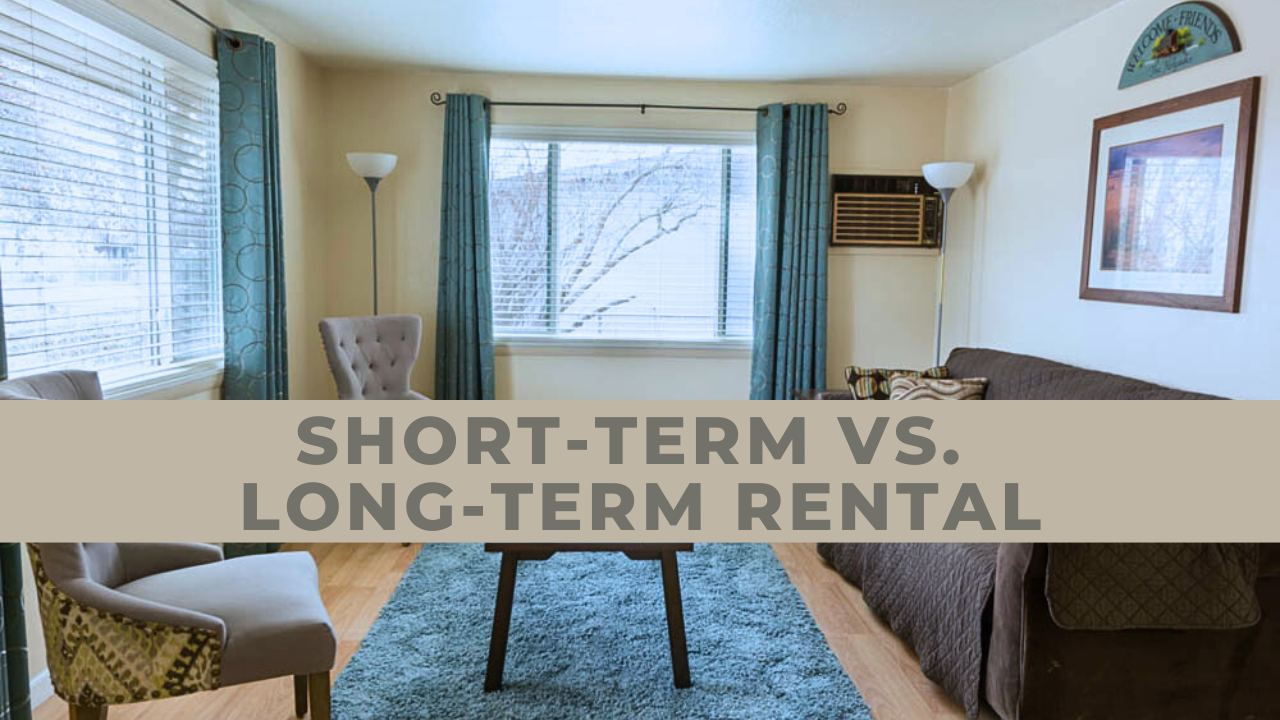When looking at renting out my old house, the question raised is how to go about doing so. The biggest question was what would work best for me right now. Since I moved in with my girlfriend, now fiancée, I didn’t need to take the majority of my furniture with me. So, the house was already mostly furnished. I could have sold all the furniture and basic goods that I had, or I could take a different risk and rent the house out furnished.
I decided to take the furnished route and started buying additional furniture for the house. I wanted to take the chance to rent out my house to mid-term and short-term tenants. Here is why I made that decision: Flexibility, Potential Greater Profit, Necessary House Improvements, Security.
Flexibility
Currently, I am in college at Boise State University and will be for the next couple of years. That means I have some flexibility to clean and turn the house over in between tenants. If I had a full-time job that would add a layer of difficulty for cleaning and prepping the house for tenants.
Potential Greater Profit
Long-Term renting vs Short-Term renting both have pros and cons to them. Each carries certain risks and rewards. Long-Term tenants can mean steady long term income flowing in. But an unfurnished house usually earns less than a short or mid-term rental can.


Based on data that I pulled from the varies housing markets and listing services this is the breakdown.

If each different type rented for 30 days of the month renting unfurnished could earn $1,600 (the lowest) while listing on Airbnb could earn $2,837 (the highest). Even if I only rented out for half of the month, I would earn $800 from traditional and $1,430 from Airbnb. But that is only factoring in one tenant on Airbnb for those 15 days. The more stays you have the potential earnings increase based on the cleaning fee that is applied to each stay.

Based on my current estimation, it will cost around $1,600 a month to keep the property up and running with all utilizes included. For long-term traditional renters, they would cover at least the water and electrical utility bills. That would bring the average monthly expense to about $1,300 a month.
However, those estimates do not include any costs for cleaning, maintenance, and repairs that will be needed. If you have a tenant who stays a long time you could have major repairs and cleaning to do. That could also go for a short-term tenant who throws a party and causes a lot of damage. Both avenues offer some protection with security deposits or rules that allow for additional cleaning and damages costs to the tenant.
Ability to Improve House with Flexibility
My house is old… it was built in the 1960’s and it really does show. The electrical work really needs to be ripped out and redone. The old, single room ac unit died so a new AC unit needs to be purchased and installed. The yard does not have a sprinkler system set up making it hard to keep the yard looking good. The driveway is mostly dirt and when it rains, it turns into a very large body of water. So, the driveway needs to be fixed up.
The back deck is a ticking time bomb. I did a lot of work this fall replacing boards, repairs and a new paint job but eventually, it will need to be replaced. The idea would be for a smaller patio to take its place out back. Lastly, the previous owners added a room, kind of like a garage but acting as a bedroom. That portion of the house is not connected to the main air ducts for heating and cooling and the ceiling and support beams were not set up with the best system. I need to add a support beam in and eventually, tear it down and redo the addition.
All in all, there is a ton of work that needs to be done to the house. If I earn a little more money by going with short and mid term tenants, I can complete the repairs faster and have more flexibility in scheduling and completing those repairs and upgrades.
Home Security
When I first began planning this transition, I had very recently moved in with my girlfriend. Which meant if this went south in the relationship, I would need to move back into my old house. Having a yearlong lease with a tenant would make that a little bit difficult. If the house was rented out for shorter periods it would be easier to reestablish myself there. This factor impacted my decision along with all the others just mentioned.
Based on all the data and information I could gather I made my rental game plan as this:
- Top Choice – Mid-term rental for tenants staying 30 days or longer but usually a month or two at a time.
- Second Choice – Short-term rental for tenants staying less than 30 days (maybe a few for longer if possible).
- Third Choice – Long-term rental for tenants staying 6 months or a year at a time.
The great thing about starting this up is I can adjust the course if I need to. If furnished renting no longer works, I can sell everything and switch to unfurnished. Just like I can switch between short-, mid- and long-term tenants. The flexibility offered gives me a lot of peace of mind diving headfirst into owning and managing a rental house.
© EuduringFinances, 2024. All Rights Reserved.
Related Posts –

